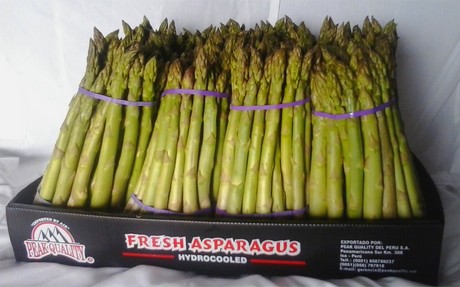 as the world's largest exporter of fresh and canned asparagus is currently facing a complex problem.
as the world's largest exporter of fresh and canned asparagus is currently facing a complex problem. The higher freight costs, compared to Mexico, the steady decline in profitability and the consequent change of local farmers to crops with higher profit margins, are factors that endanger the future position of the Peruvian asparagus.
85% of asparagus exports are shipped by air, mainly to the United States and Europe.
40% of the price of a kilo of fresh Peruvian asparagus in the U.S. is used to pay freight prices.
According to Ramon Aparcana, general manager of Peak Quality, even though Peru pays much higher freight costs than their Mexican competitors, Peru maintains its competitiveness.
"What helps us is our productivity, the fields' management in Peru is much more technical than in Mexico. We can harvest up to twice of what they harvest per hectare," he stated.
As the sector's profits have been decreasing in recent years, producers have been forced to achieve productivity levels and cost management that only large companies can achieve.
"In the past, when profits were higher, it was normal for there to be farmers who didn't have much more than 10 hectares. Currently, this has changed and the business is divided among a few hands," said Ramon, who added that" the issue is really about profitability. That's why some producers are giving more space to the grape."
Peru needs to compete with Mexico, because Mexico's production and export to US is growing. "In the medium term, thanks to the possible reduction of the mandatory fumigation in Peru by the USDA. We could have different presentations for the customers in the U.S., as we do in Europe, and that's something the Mexicans won't do," said Ramón.
It appears that the added value is not only key, but also the only way for Peru to continue leading the asparagus' market in the future.





